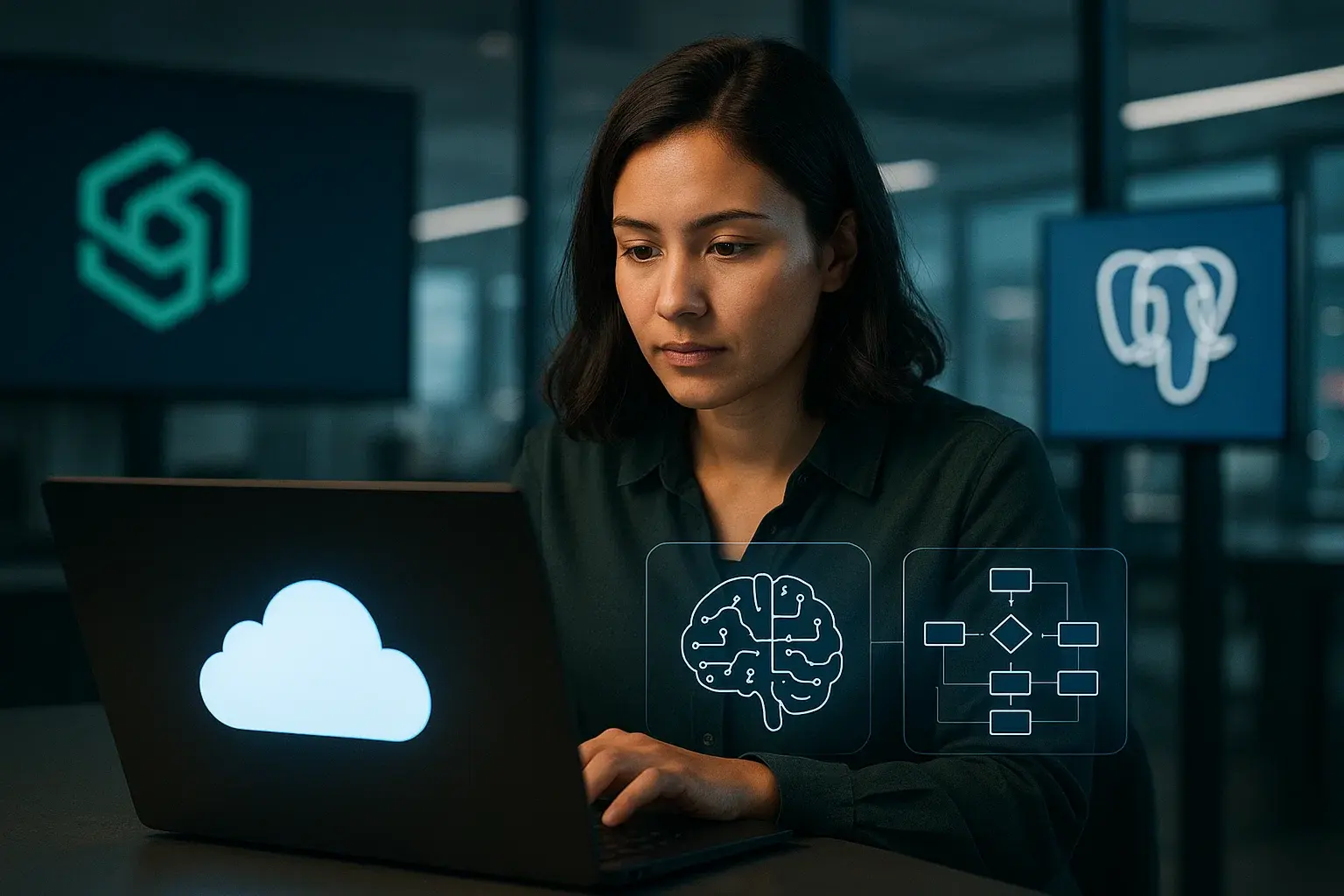If you've ever wanted to build an AI agent that not only answers questions but also remembers past conversations, handles long-term data, and works securely at an enterprise level, you've likely run into a major problem: technological fragmentation.
You need one system for storing vectors, another for chat history, and yet another for long-term memory—eventually creating a maintenance nightmare.
To solve this, Microsoft released the new LangChain + LangGraph connector for Azure Database for PostgreSQL. At TecnetOne, we’re breaking down what this launch means, why it matters, and how you can take advantage of it in your AI projects.
What Is This Connector, Exactly?
The new Azure Postgres LangChain + LangGraph Connector turns PostgreSQL into a centralized brain for your AI agents.
Instead of relying on scattered services, you can now:
- Store embeddings and perform semantic searches in the same database your app uses.
- Log chat history and short-term memory, so your agent remembers past conversations.
- Build long-term memory that captures and retrieves knowledge without external systems.
In short, Postgres becomes the single source of truth for both persistence and retrieval.

Azure Postgres LangGraph Connector (Source: Microsoft)
Today’s Problem: Too Many Systems, Not Enough Efficiency
Currently, building a functional AI agent means managing multiple components:
- A vector store for search
- A system for chat logs
- An ad hoc patch for long-term memory
This fragmentation increases costs, complexity, and security risks—each integration creates a new attack surface.
Microsoft’s new connector simplifies this landscape: one secure, scalable, enterprise-ready database to rule them all.
Key Features of the Azure Postgres Connector
Here’s what makes the connector a game-changer:
Entra ID Authentication
Securely connect LangChain and LangGraph flows to Azure Postgres using identity-based perimeter protection, a must-have for corporate environments.
Vector Search with DiskANN
Using pgvector + DiskANN, you can run high-dimensional, fast semantic searches. Better performance, lower cost.
Native Vector Store
Store and query embeddings directly—ideal for RAG (Retrieval-Augmented Generation) use cases where the agent needs to consult its knowledge base before responding.
Dedicated Agent Store
A space built to store agent state, memory, and chat logs, perfect for multi-turn conversations and long-term context.
Learn more: The Evolution of Artificial Intelligence Driven Malware
How to Get Started
You don’t need a complex setup. With a few commands, you can start building your own intelligent agent:
- Install the connector:
pip install langchain-azure-postgresql
pip install -qU langchain-openai
pip install -qU azure-identity
- Authenticate with Azure via Entra ID:
az login
- Configure your vector store using DiskANN and Azure OpenAI embeddings.
- Build your LangGraph agent to retrieve data, store memory, and maintain context.
Example Use Case: A Conversational Agent with Memory
Want your AI to remember yesterday’s conversation and use that info today?
With this connector, you can:
- Set up semantic search on your knowledge base
- Use Postgres as a checkpointer for short-term memory
- Enable your agent to give more natural, context-aware responses
Ideal for:
- Customer service agents that recall past tickets
- IT support agents needing ongoing issue context
- Finance assistants that track user preferences over time
Business Benefits
Why should your organization consider this connector?
- Stronger security: fewer systems = fewer vulnerabilities
- Enterprise scalability: centralized memory that grows with you
- Reduced complexity: move from prototype to production faster
- Lower cost: consolidate tools and reduce overhead
At TecnetOne, we see this as a huge step toward democratizing enterprise AI agents without creating a messy architecture.
Read more: Pentesting with AI: The New Generation of Penetration Testing
Why It Matters Now
AI is reshaping how businesses operate—but memory and persistence remain key limitations. Without a solid foundation, agents are smart but forgetful.
With the Azure Postgres connector for LangChain and LangGraph, Microsoft proposes a robust, scalable, and secure model for truly intelligent agents.
This isn’t just a technical convenience—it’s the difference between a shiny demo and a real-world solution.
Conclusion: The Future of AI Agents Is in Simplicity
The LangChain + LangGraph connector for Azure Postgres tackles one of the biggest bottlenecks in applied AI: how to store, retrieve, and protect agent memory.
By centralizing everything in one scalable, secure database, developers can focus on building smarter, more reliable agents.
At TecnetOne, we believe this kind of simplification is key to unlocking secure, consistent, and enterprise-ready AI—and we’re ready to help you put it into action.

